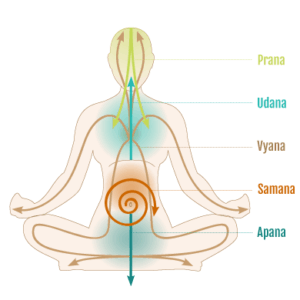Pranayama translates to “expansion of life force” and is one of the most transformative aspects of yoga. It invites us to connect with prana shakti, the vital energy that sustains us. Through conscious breathing, we can influence both the mind and body at a deep level.
The benefits of pranayama include:
- Vitalizing the entire system and increasing life energy.
- Building prana shakti, or the body’s vital force.
- Developing mental focus and clarity of mind.
- Regulating the autonomic nervous system, balancing stress and rest responses.
- Enhancing physiological functions including digestion, circulation, and sleep.
Breathing is both automatic and intentional, which means we can consciously use it to restore equilibrium. When we balance the breath, we balance the nervous system, and in turn, the mind begins to settle.
How to Learn and Incorporate Pranayama
Pranayama is learned systematically, and the process itself is as important as the result. It should be approached non-competitively, gently, and practiced consistently over time. Just like building physical strength, expanding breath awareness and control happens gradually.
A good starting goal is to practice for five minutes a day for one month. The “open secret” of pranayama is that everyone benefits from increasing their breath threshold capacity which is the ability to gradually lengthen, smooth, and sustain the breath.
The Four Parts of the Breath Cycle
Each breath cycle has four parts:
- Inhale – The direction of energy is downward, bringing grounding and nourishment
- Retention – A brief pause that allows prana to be absorbed and circulated.
- Exhale – The direction of energy is upward, creating release and clarity.
- Suspension – A moment of stillness after exhale, symbolizing space and surrender.
By becoming aware of all four phases, we learn to balance effort and ease.
Methods of Practice
Begin by linking asana and breath, moving in a way that aligns body and breath rhythm. When movement is conscious, the breath becomes steady; when the breath is conscious, the movement becomes meaningful. Asana is not about mastering form, it’s about using movement to meet the student where they are and address the needs of the body, mind, and spirit.
From there, pranayama may be practiced progressively using specific methods:
- Breath-centric asana to prepare the lungs and nervous system.
- Pranayama with inhale krama (aloma) – gradual inhalation steps to expand prana.
- Pranayama with exhale krama (viloma) – gradual exhalation steps to lengthen and calm the system.
- Pranayama with retention to extend the inhale and deepen internal focus.
- Pranayama with suspension to extend the exhale and quiet the mind.
Each of these approaches helps develop awareness and capacity without strain.
Ratios and Energetic Effects
We often use breathing ratios (such as 1:1, 1:2, or 1:2:2:1) to gradually build breath threshold capacity. These ratios are powerful tools that create energetic effects in the body:
- Brmhana – expansion and energizing
- Langhana – calming and grounding
- Samana – balance and integration
When practiced regularly, these patterns help harmonize the subtle energy channels, or nadis, supporting both physical and emotional health.
Physiological Benefits
Pranayama supports whole-body wellness by:
- Regulating the digestive fire (agni).
- Increasing lung capacity and oxygen efficiency.
- Balancing cardiac rhythms and heart rate variability.
- Supporting hormonal and immune balance.
- Promoting better sleep and recovery.
- Enhancing vitality and overall energy.
This deep integration of body, breath, and mind creates the foundation for resilience and grace in daily life.
The Pancavayu Model
In yoga philosophy, the Pancavayu Model describes the five movements of prana that animate the body:
- Apana Vayu – downward-moving energy for grounding and elimination.
- Samana Vayu – inward-moving energy for assimilation and balance.
- Vyana Vayu – outward-moving energy for circulation and coordination.
- Udana Vayu – upward-moving energy for expression and growth.
- Prana Vayu – inward and upward energy for vitality and inspiration.

When we practice pranayama with awareness, these energies become balanced and harmonious — creating vitality, clarity, and peace from within.
Begin Where You Are
Start simply. Five minutes of conscious breathing each day can change how you feel mentally, physically, and emotionally. The more we return to the breath, the more it returns us to ourselves.
Inhale to ground. Exhale to rise.
This is the rhythm of life and the steady anchor within us all.

